I did not document the painting very thoroughly. After all the painting process is very much the same for every loco. Maybe I will come round to writing a few topics about it, but there are sufficient sources of information on the internet and on the book market.
The loco is still split in its seven separate parts which can be painted individually. That saves big time on masking! The only part that now really needs masking is the cab. |

In its base coat.
To clean the materials of grease, production substances (especially the resin) and possible residues of flux the model was scrubbed in soft soap, rinsed and then bathed in household vinegar (acetic acid) to create a bit more tack on the brass. After rinsing thoroughly it was left to dry. A primer coat (Tamiya) was applied. |

Then the airbrush came out and Philotrain black found its way. |
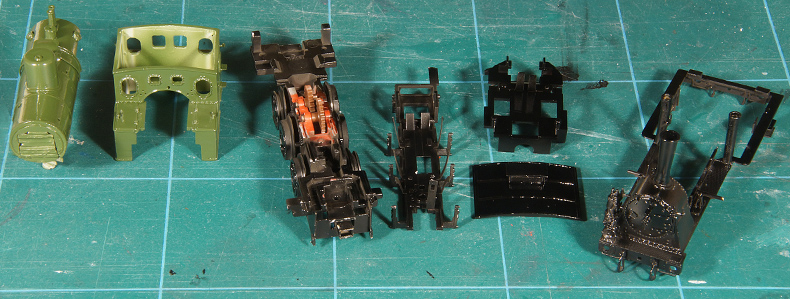
All main components done. The green is also from Philotrain. |
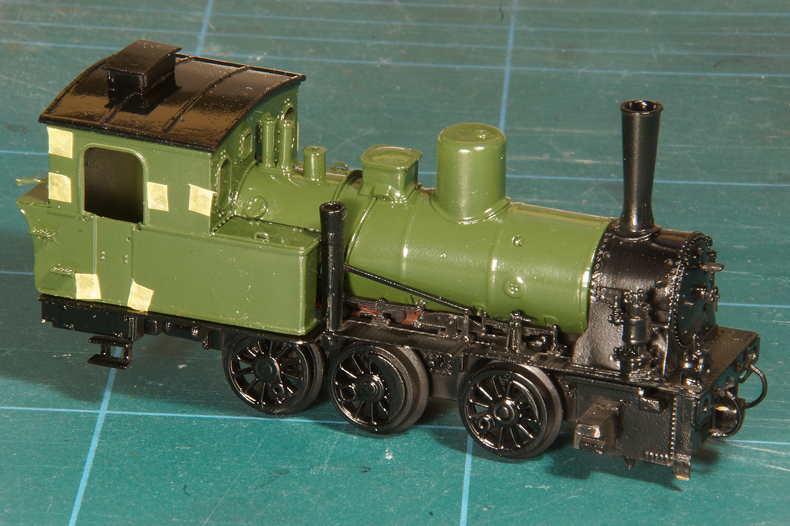
Five main parts together. Masking has already started. |
 |
Masking is another of those jobs that take tons of patience. Practise makes perfect, is a motto that also applies here. Use the same brand masking tape over and over again and you will learn to appreciate its properties and learn when to expect which result.
I did not try to leave all black areas free. I accepted I needed to rework some areas with black paint, to the benefit of saving on tedious and difficult masking. |
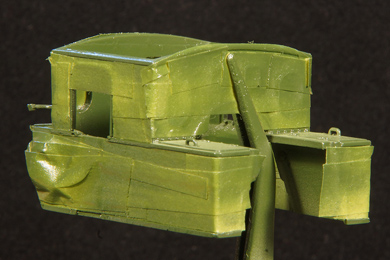 |
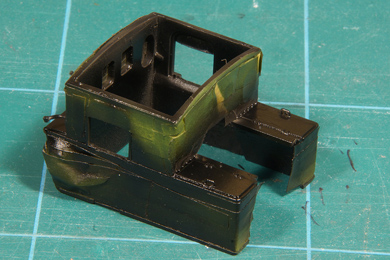 |
 |
It may surprise you that after masking the cab is sprayed once more with green (left, top) and after that has dried with black (right). This is to prevent bleeding, creeping of black paint between the green paint and the masking tape, the paint being drawn in by capillary action (top diagram). Bleeding results in ugly, irregular black smears betraying your masking was not adequate and needing rework.
The trick is that I use bleeding to prevent bleeding. I first spray it in the same colour as the masked layer. If bleeding occurs it will be invisible because it is in the same colour!! (bottom diagram) The new layer does not need to give full coverage. It only needs to be thick enough to seal the openings at the edge of the masking tape. |
Once that second layer of paint is dry, you can spray black over it with a great peace of mind as any bleeding will be stopped by the green sealing layer. Mind you good masking is paramount to prevent bleeding, so work to the best of your abilities. But no matter how good you do your masking job, there will always be those nook and crannies where bleeding might occur. This trick helps to prevent bleeding on smaller issues in the masking. It does not help disguise sloppy work. |
 |
The boiler was provided with bands, I used the 2" wide bands from MicroScale no 91112 which covered the cast boiler bands pretty well. |
 |
The wheel tyres were cleaned. I had not taken any precaution to protect them from paint while spraying. The Philotrain is easily soluable in thinner, so I thought I would have no trouble cleaning the wheels. That was a miscalculation. I spent over an hour doing so, damaging other paint in the process. Masking would have been better option. |
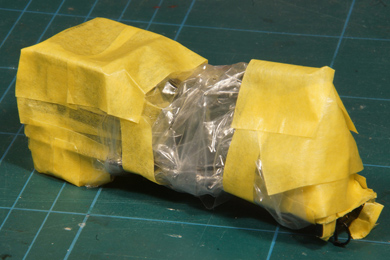 |
As a final step in the painting the locomotive is almost entirely wrapped in masking tape and plastic, taking several hours to do so. Then in minutes the buffer beams are sprayed red. |
 |
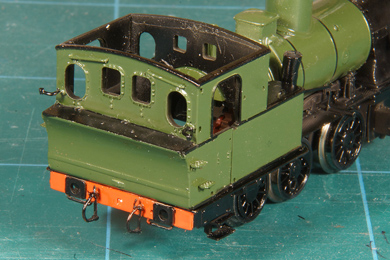 |


Sign my
GuestBook